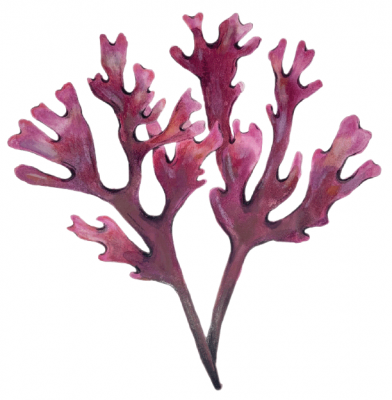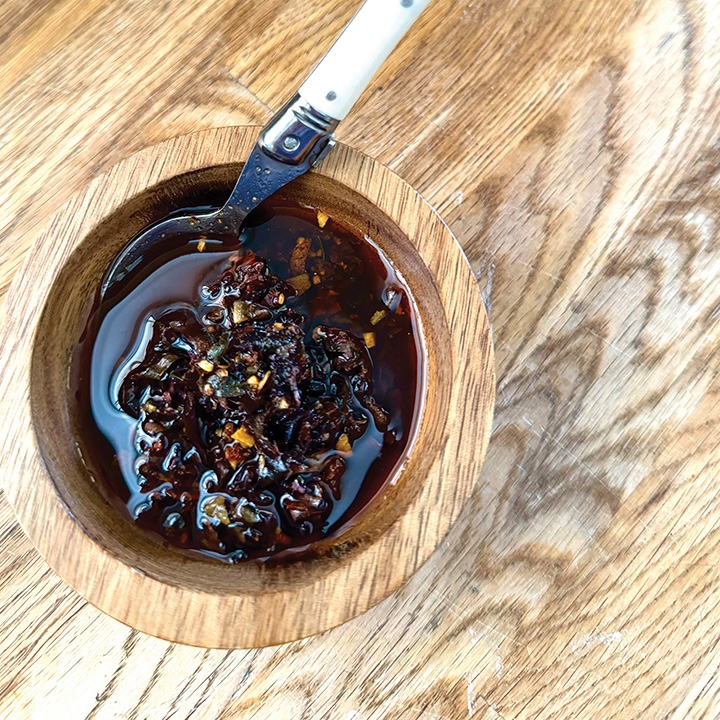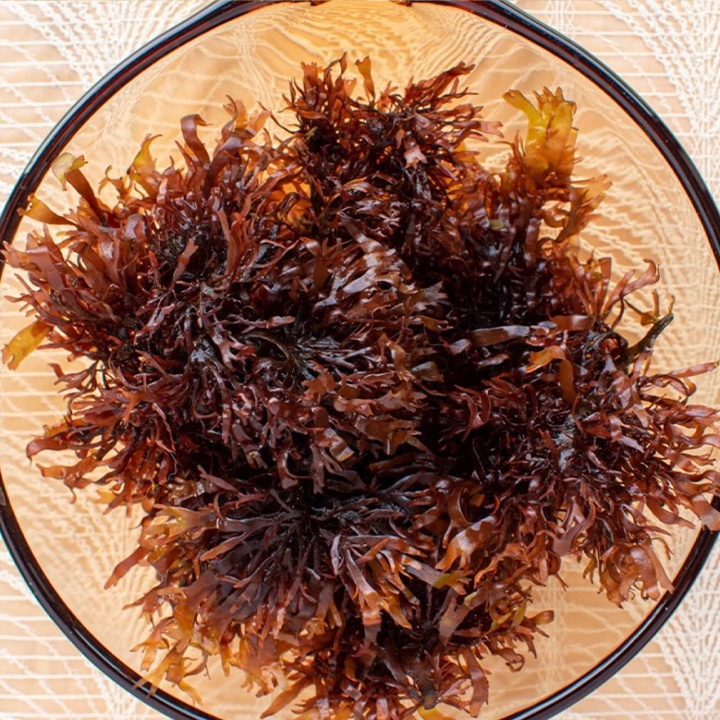
Profile
Dulse (Palmaria palmata, Devaleraea mollis)
Dulse, a red sea vegetable varying in color from deep rose to reddish purple, can be found in the wild clinging to the rocky shores of the northern Atlantic and Pacific, from the mid-tideline all the way down to depths of 65 feet. There are several species of dulse with varying shapes and sizes, ranging from bushy pom-poms (Devaleraea mollis) to flat leathery-soft blades (Palmaria palmata). No matter the form it takes, this red beauty is sure to add a smoky punch to your culinary repertoire.
The earliest written record of dulse comes from Iceland in 961 AD. Many cultures recognized dulse’s medicinal ability to cure people of parasitic intestinal worms, due to a naturally occurring compound called kainic acid.
In the United States, this seaweed is grown in land-based tanks, and industry research efforts are underway to develop farming methods in the open ocean using seed nets or lines with hatchery-produced spores.
 Flavor Profile (notes and cooking tips)
Flavor Profile (notes and cooking tips)
Slight bitterness, clean finish, very earthy when dried, rich umami smokiness when cooked, which some say is comparable to the taste of bacon.
Texture
Thin, supple leathery ribs with crisp tips, slightly chewy texture when cooked.
Preparation Tips
Give your dulse a quick rinse in freshwater before cooking. Dulse burns easily, so be sure to cook on medium to low heat. When blanched, dulse takes on a deep green color.
Where is it Farmed?
Land-based tanks on both the east and west coasts.
Harvest Season
Year round.
Nutrition
Great source of protein, vitamins, minerals, and antioxidants. Also contains unique compounds such as polyphenols and polysaccharides, which have been studied for their potential anti-inflammatory and antioxidant properties.
Storage Tips
Refrigerate and consume fresh dulse within 5 days of harvest. To prolong shelf life, freeze or dry in dehydrator and store in a cool, dry place.
Environmental Benefits
Absorbs CO2 from the ocean and produces oxygen, provides food for grazers like sea urchins and shelter for invertebrates like snails.
Recipes

Dulse Chili Crisp
Recipe by Christina Ng, Dulse sourced from Sunken Seaweed
Ingredients
- 8 cloves garlic - finely chopped
- 1 3/4 cups neutral oil (sunflower, grapeseed)
- 1 cup dulse
- 1/3 cup Aleppo pepper flakes
- 1 tbsp smoked paprika
- 21/2 tsp sea salt
Directions
- In a small sauté pan, heat the oil and garlic together until garlic is lightly browned.
- While garlic is cooking, pat the dulse dry in paper towels, then finely chop.
- Place dulse into a bowl with Aleppo pepper flakes, smoked paprika, and sea salt.
- Once garlic is aromatic and browned, take off heat and pour garlic and oil over the dulse, chili flakes, and smoked paprika. Let rest for 24 hours at room temperature.
- Serve over seafood, eggs, rice, or wherever you need an umami kick.

Dulse Caesar Dressing
Recipe & photo by Oregon Seaweed
Ingredients
- 1 oz dulse
- 2 small garlic cloves - minced
- 2 tbsp freshly squeezed lemon juice
- 1 tsp Dijon mustard
- 1 tsp Worcestershire sauce
- 1 cup mayonnaise
- ½ cup Parmesan
- ¼ teaspoon salt
- ¼ teaspoon freshly ground black pepper
Directions
- Combine all ingredients into a blender or food processor.
- Blend until creamy.
- Taste and add more dulse to your liking.
- Try to make it a few hours before needed to let the flavors meld!